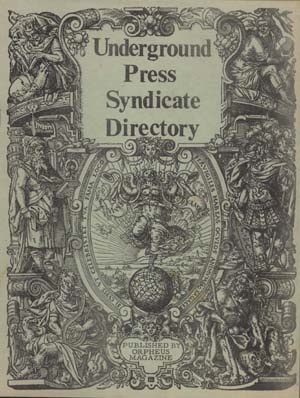 The Association of Alternative Newsmedia is building out a kind of wire service to allow alternative news sites to share content with each other — and maybe make some money.
The Association of Alternative Newsmedia is building out a kind of wire service to allow alternative news sites to share content with each other — and maybe make some money.
The recently launched AltWeeklies Content Exchange lets papers like the Boston Phoenix, Minneapolis’ City Pages or Oakland’s East Bay Express swap stories, photos, video, or other interactive multimedia to bolster their coverage of national news. While AAN members will be able to use the material for free, outside news organizations — think newspapers, broadcast networks, or news sites — will be able to pay to license it. On a local level, the exchange would also create a platform for citizens and freelancers to offer (or sell) work to their local weekly. (Or another AAN member: The “N” switched from “Newsweeklies” to “Newsmedia” last summer, and the group has started admitting alternative online-only news sites.)
What AAN is trying to do is take advantage of scale — providing extra copy for its members as well as larger, mainstream outlets that don’t have the time or resources to cover the issues the weeklies specialize in. If the program proves successful it would not only increase the amount of journalism readers are exposed to, but it could contribute to papers revenue, said Tiffany Shackelford, executive director of the AAN.
“From my point of view, in the news association space, which is a weird animal, I think we all tend to get excited about the shiny object or huge success story and aren’t able, or can’t, give members somewhat basic and easy to use tools,” she said. “That’s what I hope this does.”
Shackelford told me the exchange doesn’t currently have set rates for content licensing; most prices will be negotiated on a case-by-case basis. If the program takes root, that could change, she said. AAN members have free access to the exchange through the dues they pay to the group. The exchange was built on Cont3nt, a larger system for connecting freelance media producers with news organizations.
“This is an opportunity to get paid from larger news organizations,” Shackelford said. “Think about things like Occupy in cities around the country, or the upcoming presidential election and the footage that could come out of that from smaller places that large organizations don’t have the money to cover any more.”
This is not the first time alternative weeklies have banded together to share their stories. One historical precedent is the Underground Press Syndicate, a network of countercultural papers that started in the mid 1960s. The group was a kind of wire service to provide reports from across the country. Wikipedia tells us:
UPS members agreed to allow all other members to freely reprint their contents, to exchange gratis subscriptions with each other, and to occasionally print a listing of all UPS newspapers with their addresses. And anyone who agreed to those terms was allowed to join the syndicate. As a result, countercultural news stories, criticism and cartoons were widely disseminated, and a wealth of content was available to even the most modest start-up paper.
The need to share stories remainss, but the tools have changed. (This content exchange won’t operate via second-class mail.) Shackelford told me the idea to create the exchange came from a desire to create a simple means of offering up the best work from weeklies around the country and make it available to their peers. Weeklies pride themselves on the time and reporting that goes into coverage that falls outside traditional media, and this is a way of promoting that work, she said. It’s also a way to tap into broader stories or trends happening in the media. For topics like Occupy or the protests on changes to union laws in states, those stories have a component that plays on the local and national level. Another example would be features, profiles, or interviews of musicians or other touring artists whose schedule may take them from one alt-weekly community to another.
Weeklies have faced many of the same challenges as their larger, mainstream counterparts in terms of circulation and revenue declines, and the content exchange could offer a means of providing additional stories at minimal costs. (If weeklies choose to take part: Many have chain ownership and already share content among sister publications; they may choose to keep that sharing in-house.) Still, Shackelford said her goal is to create a suite of tools that will allow individual weeklies to use the network to improve their bottom line. Shackelford said the AAN will also be launching an ad exchange within the next few weeks.
If the exchange takes off, and traditional media or other websites develop an appetite for the alt weeklies work, Shakelford said she could imagine the AAN taking steps to become a more formal content network by packaging material from members and syndicating that curated work.
Underground Press Syndicate image from Wikimedia Commons